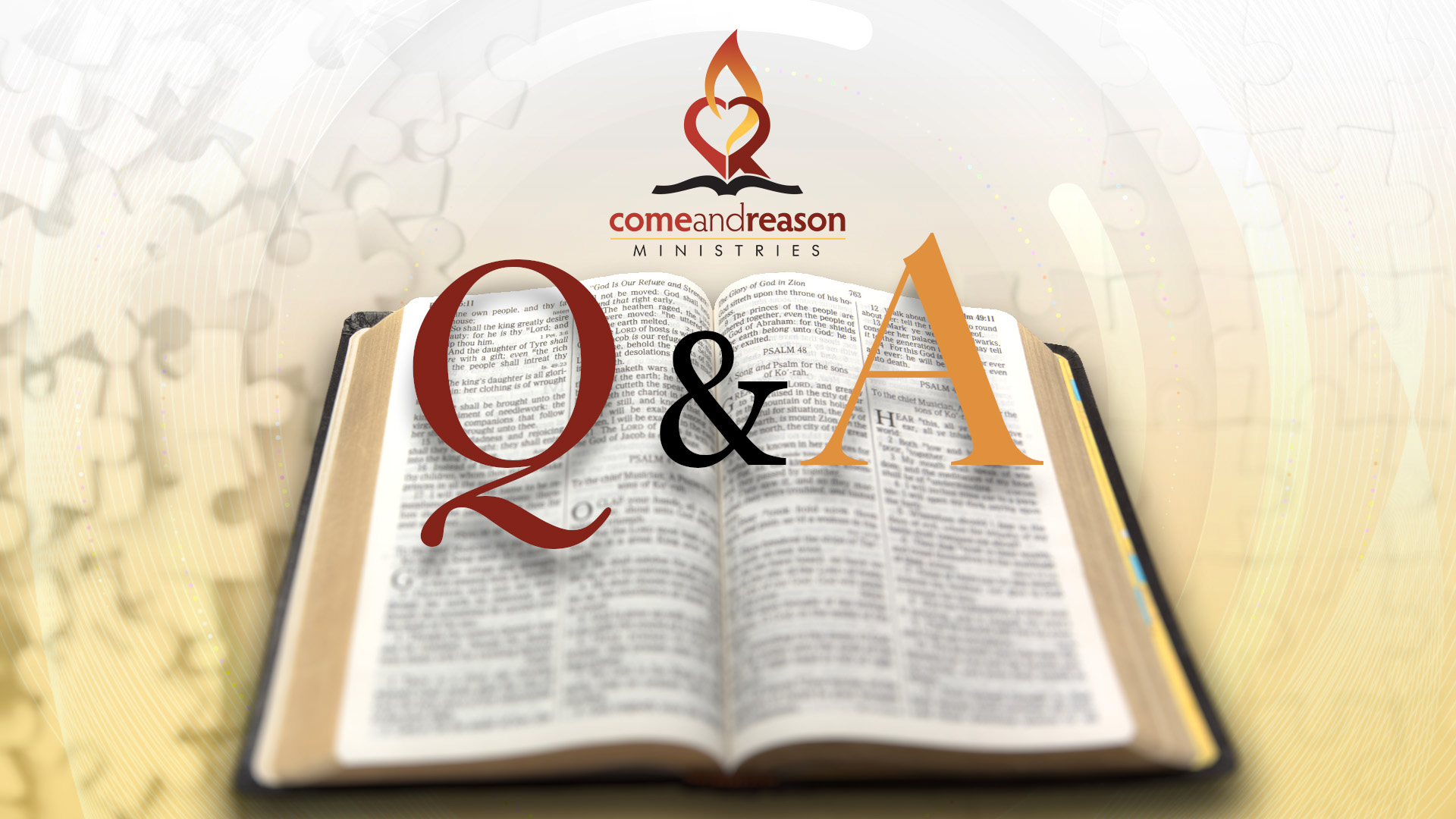Can you address the question of how Jesus became our “substitute” and how you see this?
Thanks. EH
Before we can answer the question of “how” Jesus became our substitute we must first answer the question, “was Jesus our substitute.” This may sound like a strange question to some, but within Christianity not everyone accepts the idea that Jesus is our substitute. As I have explored the different aspects of this issue, it seems the real point of contention is not really the issue of whether or not Jesus was our substitute, but rather the debate turns on the question, “substitute for what.”
Generally, there are two views of Christ as our substitute. The first view stems from a legal mindset in which God has enacted, created, imposed, or otherwise sanctioned laws to govern His universe. Intelligent beings are subject to these laws and disobedience is met with an imposed penalty of death. In this view, God must impose the death penalty on the disobedient in order to be “just” and ensure His “law” remains authoritative.
Those who hold this model view sinful mankind under the legal condemnation of God and without hope of life eternal, unless some way is found to “beat the system.” The way the proponents of this theory solve their dilemma is to claim that Jesus came as their “legal substitute” by living a perfect life and offering Himself to “pay our legal debt” by God “executing punitive justice” upon His Son such that He dies in our place as our substitute for the crimes of sin we committed. After this was done, we were then granted “forgiveness” and life eternal, but only if we accept this payment of Christ in our behalf. Christ gets to live again because He never actually sinned and we get to live forever because He paid our legal debt. This is commonly called the “penal substitution model.” Notice how in this model the system is “rigged” so that both Christ and the sinner get to live eternally, while the claim is maintained that Christ “paid” the “debt” of eternal death. Hmmm…
Another view understands God’s law as the law of love. This law emanates from God Himself because God is love. The law of love is not enacted or legislated or in any other way imposed. It is simply the natural order of things emanating from the God of love. This law of love is the design template upon which God constructed life to operate and is described in 1 Corinthians 13 as “not self-seeking.” In other words, this love is other-centered and outward-moving. It is giving. This love was revealed in Christ “who did not think equality with God was something to be grasped, but gave Himself to save mankind” (Philippians 2:6,7; John 10:18) and “greater love has no man than he give his life for a friend” and “this is how we know what love is, Christ gave himself for us and we ought to give ourselves for our brothers.” (1John 3:16)
This principle of love is also known as the circle of beneficence. All life, health, and happiness is dependent upon harmony with this law (Romans 1:20, 13:8). One example from nature is seen in every breath we take. When we breathe we give away carbon dioxide to the plants and the plants freely give back oxygen to us – a perpetual circle of life, which is the law of love. If we break this law by stepping outside of this circle of giving and choose to stop giving away our CO2, then the only possible result, without intervention, is death by suffocation, which is not a legally executed punishment!
Sin is a breaking of the law of love, breaking its circle of operation of giving. It is taking rather than giving, selfishness rather than selflessness. Just as when the law of respiration is broken and “sleep” death results, so too the breech of the law of love naturally results in “eternal” death. When Adam sinned his very nature, method of operating, and internal drives were changed from perfect, other-centered love to selfishness – the “survival-of-the-fittest” principle of “me first.”
Selfishness is incompatible with life. It is a terminal condition. Without healing, without restoring God’s law of love into mankind the only possible outcome is death. Thus the Bible teaches “the wages of sin is death” (Romans 6:23) and “sin when it is full grown brings forth death” (James 1:15).
Christ came as Adam’s substitute to do two things. First, He came to fulfill the purpose that Adam was created to fulfill – to reveal the truth about God and counter Satan’s lies. Adam failed to reveal the truth about God and succumbed to self-protective desires, but Christ revealed the Father perfectly, countering all of Satan’s charges with Truth (John 14:9, Heb 1:3). Secondly, Christ came to fix the damage sin (believing lies about God) caused, to heal this creation, to restore God’s character back into the living human temple, to perfectly restore God’s law of love into the species known as human, to put the species back into perfect harmony with the Father. In order to do this Christ had to defeat Satan and Satan’s methods and principles by using God’s principle of ever-giving love!
Once Adam sinned, every subsequent human has been born in a terminal, self-centered, survival-of-the-fittest condition. Our situation is beyond our ability to change. We cannot cure ourselves. No human could live out God’s law of love perfectly and defeat selfishness within and develop a perfect, Godly character; a requirement for life.
But Christ came to earth a unique being in all creation history. Being fully God He humbled Himself and joined Himself to this creation. His human nature did not come as Adam’s had, from dust, or as Eve’s, from a sinless human. His humanity did not come as you and I have come into the world from a sinful mother and a sinful father. No, Christ is unique! His mother was a sinful woman (Galatians 4:4), but His Father is God. It was in Christ Jesus, in our Savior, that the two antagonistic principles battled it out. Jesus became our substitute in that He took our “sinfulness,” our “terminal condition,” our “iniquity,” our “infirmity” (Isaiah 53:4) upon Himself in order to cure, heal, and restore mankind back into God’s original ideal.
Christ was tempted in every way just like we are, yet without sin (Heb 4:15). We are tempted by our own evil desires (James 1:14) to act in self interest. Jesus took this very condition upon Himself and suffered temptations to act in self-interest, but unlike every other human being ever born or would be born, the heart and mind of Jesus Christ was in perfect unity with His Father and, therefore, in Jesus Christ every time the temptation to act in self-interest assaulted Him, Jesus overcame by loving others and giving Himself perfectly. In Jesus Christ the law of love destroyed the law of sin and death!
We see the evidence for this in Gethsemane. What did Jesus experience? Did He experience powerful human emotions? Yes, of course! And what if He followed those desires, those emotions to abandon the cross, what would He have done? He would have saved Himself! But praise God that Jesus gave Himself freely. Jesus put others first. Jesus loved perfectly, thus in Jesus Christ the infection of selfishness was destroyed by the power of God’s love!
When Jesus refused to use His power to save Himself, but instead gave Himself freely in to the hands of His creation, He destroyed death (selfishness is the basis of death) and brought life and immortality to light (2Tim 1:9,10). Therefore, He rose again still partaking of humanity, but with a humanity that He purified, cleansed, and perfectly recreated to God’s original design! His resurrection was the natural result of destroying the infection of selfishness and restoring God’s law of life, the law of love back into humanity. Thus “once he was made perfect he became the source of salvation for all who obey him” (Heb 5:8). He is our remedy. He is our Savior. He is the God-man through whom God’s very nature of love flows back into humanity again. Christ did what no other being could do. He revealed the truth about God to win us to trust. But more than this, He became our substitute by taking our condition upon Himself in order to cure, fix, and heal humanity in His own Person! It is because of His victory, because of His achievement that all who trust in Him will be infused with His Spirit. That is, the Holy Spirit takes all that Christ has achieved and reproduces it in us. Through Christ we are healed to live eternally with Him!
In conclusion, I believe that the “penal substitution model” of Christ being a legal stand-in for an external and imposed legal penalty of eternal death is the result of misunderstanding the character of God, His law, and the nature of sin. When we see God’s law as natural, not legislated, when we understand that such law has natural consequences of death when not followed, when we understand how our sinful acts are but the visible symptoms of an internal disease (selfishness) of our spiritual nature (not legal infractions of a universal code of “civil” conduct), then we begin to see that Christ as our substitute is more accurately described as a “medical healing model” in that Christ took our place in restoring, reconciling, “rightifying,” and bringing us back in to at-one-ment with God. With this model, any purported legal claims of God simply cease to exist and along with it the concept of or the need for a legal substitution.









 using your credit or debit card (no PayPal account needed, unless you want to set up a monthly, recurring payment).
using your credit or debit card (no PayPal account needed, unless you want to set up a monthly, recurring payment). instead?
instead?